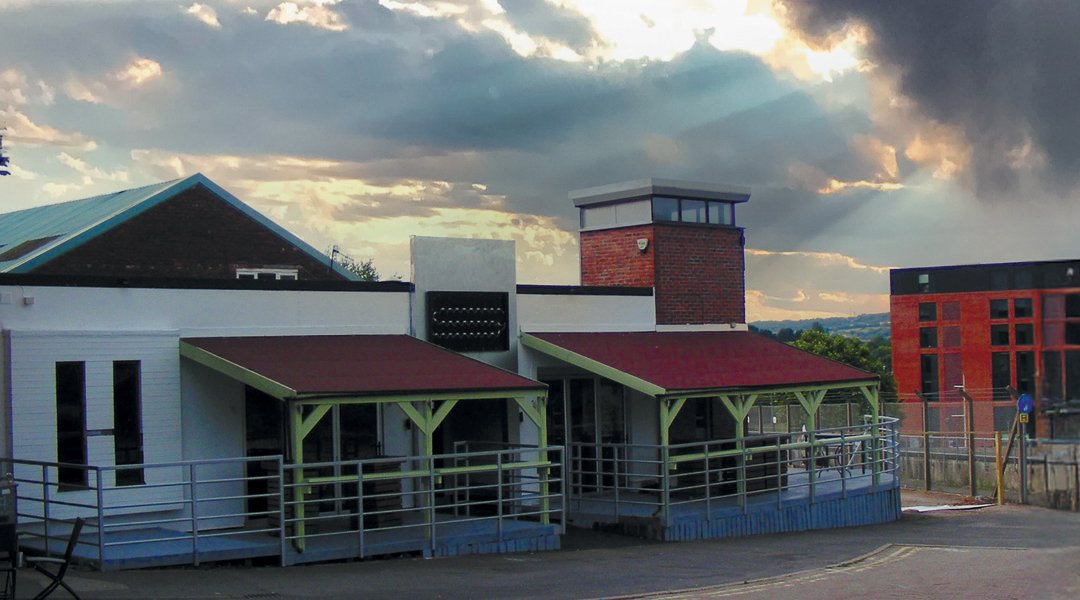In the first of two linked features, Godfrey Holmes examines some of Chesterfield’s newest architecture.
EVERY town has its landmark dates as well as its landmarks. Intriguing it is, indeed, how radically Chesterfield’s town centre has altered in its landscape, streetscape, its skyscape, too, since the crunch date of 1985 – when Chesterfield’s spacious and well-stocked Public Library moved from the Mechanics’ Institute (later known as “Stephenson Memorial Hall”) to its new home in The Pavements.
We are now present at the birth of 2025, forty years later; and we are witnessing changes far more numerous between 2010 and today than between that initially innovative quarter-century 1985 to 2010. Different, perhaps less brutal, buildings: everywhere.
“New architecture never rises from the desert of flattened land unless it has front-loaded one or more anchor tenants.”
Yet new architecture never rises from the desert of flattened land unless it has front-loaded one or more anchor tenants. Not only guaranteed occupation; a nod towards projected adaptability. That’s where Chesterfield’s brand new Courthouse, built on Rose Hill 1963-65, metaphorically fell down. When that Courthouse moved from its fairly stern presence on West Bars opposite, the newer structure designed by Prof. S. Allen and Robert Keenlyside won almost every award available. Passers-by marvelled at its revolutionary use of reinforced concrete covered with decorative stone cladding; lots of glass, lots of roofs. But it never worked for lawyers, the accused, police – or the Magistracy. So it lay empty and vandalised for nine years before being rescued, post-Covid, by a developer of apartments.
Any brand new architecture, frequently redesigned after initially failing redevelopment, has an additional responsibility: to sit adjacent to closed department stores, duplicate coffee-houses, moribund charity shops, abandoned tailors, shut banks, also wooden trestles erected only for the occasional flea market. In other words – as so many home-owners have learnt to their cost – you are only as good as your neighbour. Nor is Chesterfield, a town formerly dependent on coal, steel, light and heavy engineering, able to revive itself overnight. Even with a strong base of commuters heading for the cities of Derby, Nottingham and Sheffield.
Since 2016, “Northern Gateway” has been Chesterfield Borough Council’s trump card: not only to improve entry into the North of England, but also of itself to create 500 new and highly-paid jobs. And this Gateway was announced in a manner nobody could have foreseen: trespassing upon the urban desert known as “The Do’nut”: that huge municipal car park created in the early 1970s at the fortuitous meeting-up of Saltergate, Newbold Road, Brewery Street, Corporation Street, and St Mary’s Gate; the soulless Markham Road Roundabout creating another automobile-led desert downhill from the Crookѐd Spire.
Therefore, once the clearers of deadly asbestos and archaeologists had quit the site, along came “Enterprise Centre,” joint-funded by Sheffield City Regional Infrastructure Fund (£5.83 million) and the local council that sacrificed a few of its parking lots (£3.5 million). Also a total surprise: the dreadful Saltergate multi-storey car park was totally remodelled, with a bit of that money reserved for the iconic, but mostly derelict, Co-operative Store on Elder Way. In fairness, the Co-operative Group itself chipped in a little cash, perhaps to atone for its former abandonment of so extensive a retail footprint.
But “Northern Gateway” is only half of Chesterfield’s ambition. The other half – a project largely stalled, or postponed, for two decades – is “Chesterfield Waterside,” its Venice of the North. This beautiful £340-million development, allegedly sustainable, incorporates a canal basin, an hotel, waterfront promenades, ice-cream kiosks, a dedicated car park; also 177 high-quality homes: many already built, off-plan, on Arnold Laver land beside the old road to Brimington. All this with the promise of concessions for BHP Accountancy, Varley Clothing, and Rosen Wealth Management alongside assorted commercial tenancies, enticed by Waterside’s ambience and unimaginable glamour: incredibly Britain’s 47th largest Act of Regeneration.
And although “Levelling-Up” will go down in history as a well-intentioned, but largely unfulfilled, national aspiration, the former Tory Government did contribute £20 million to the Borough Council’s third prong of its fork of incremental improvement: an 18-month-long revival of the Heart of Chesterfield Town Centre: three-quarters of that money awarded to Stephenson Memorial Hall; the remainder to tidying up Packer’s Row, Rykneld Square, Spire Walk; and two pedestrian passages: first from the Railway Station to Knifesmithgate; second from formerly Dent’s the Chemist to Rose Hill.
Editor’s note: In the February issue, don’t miss part two: The quality of Chesterfield town centre’s (umpteen) new buildings.

